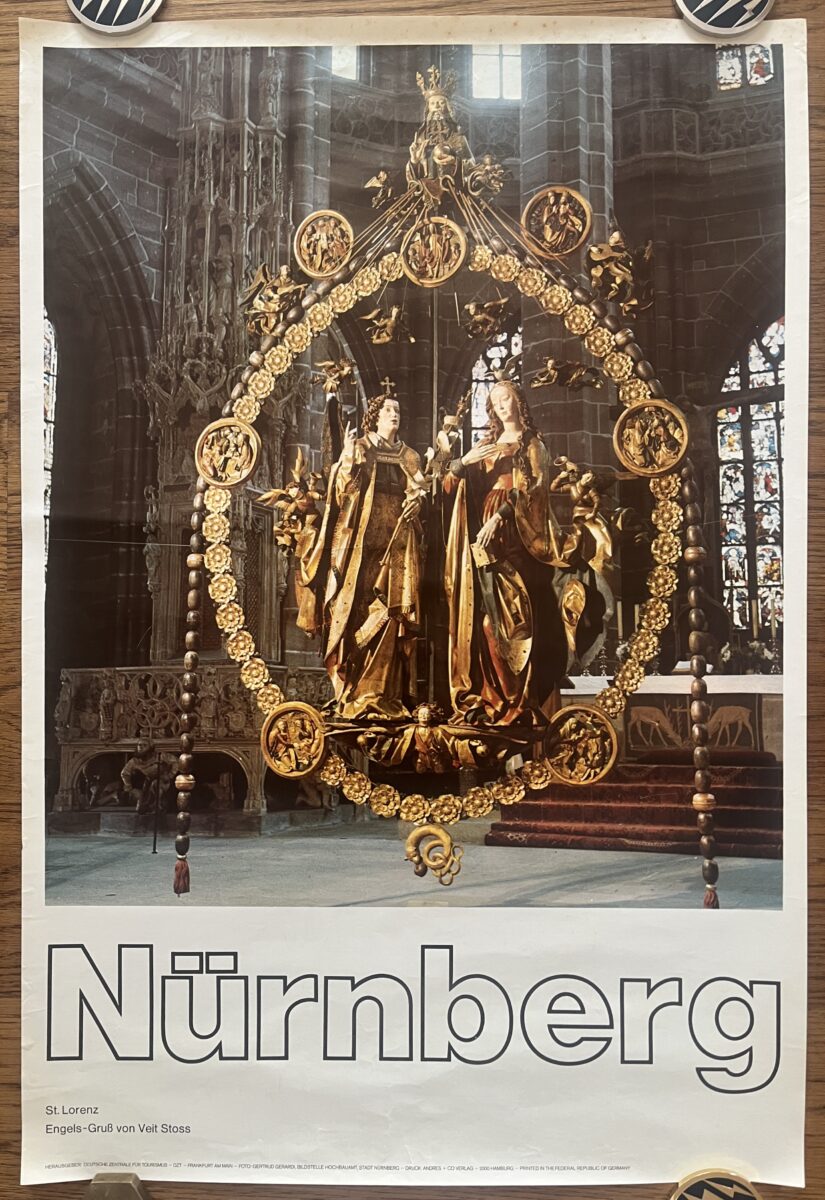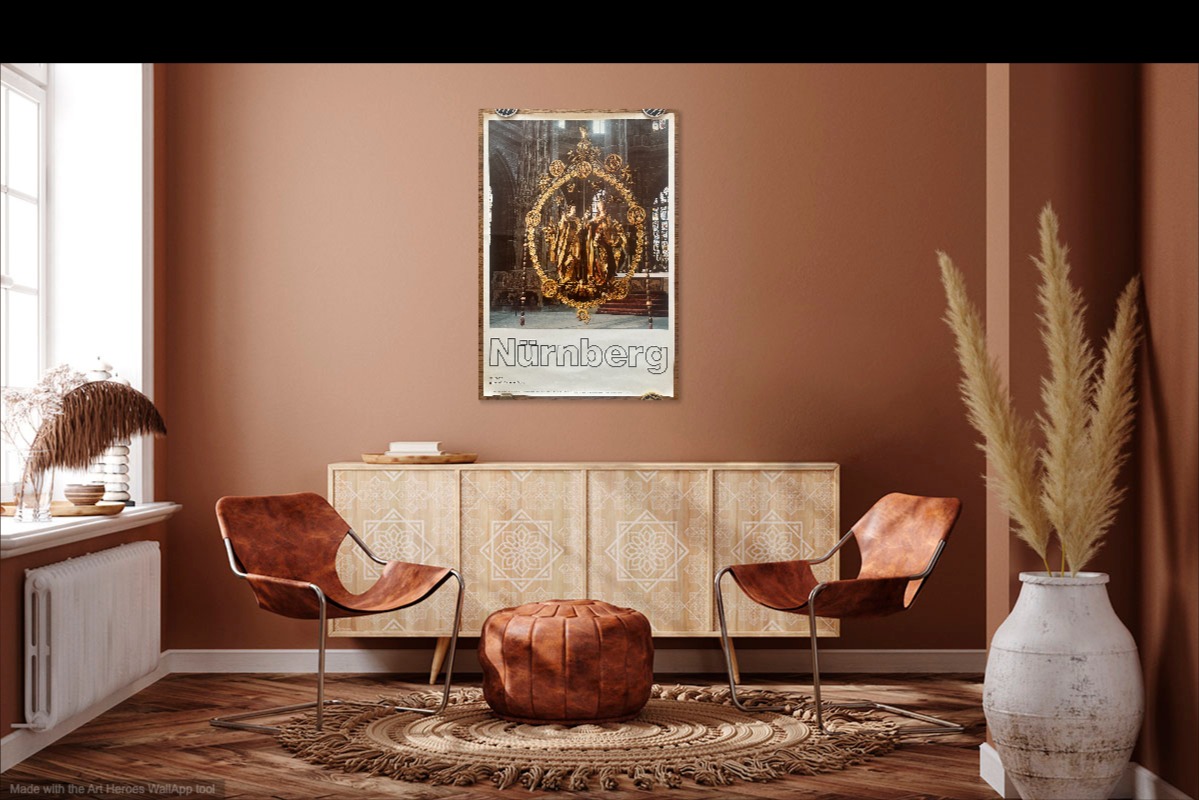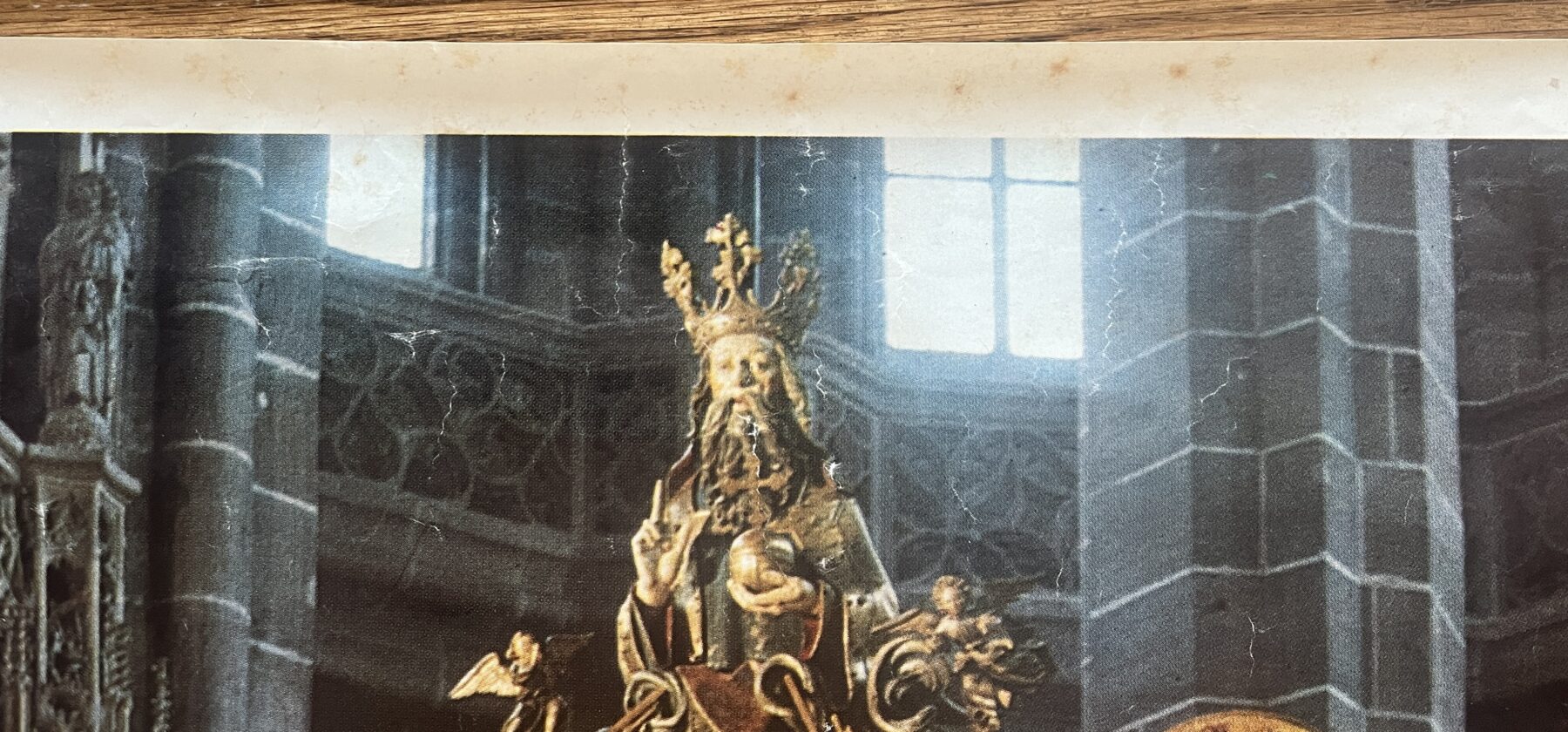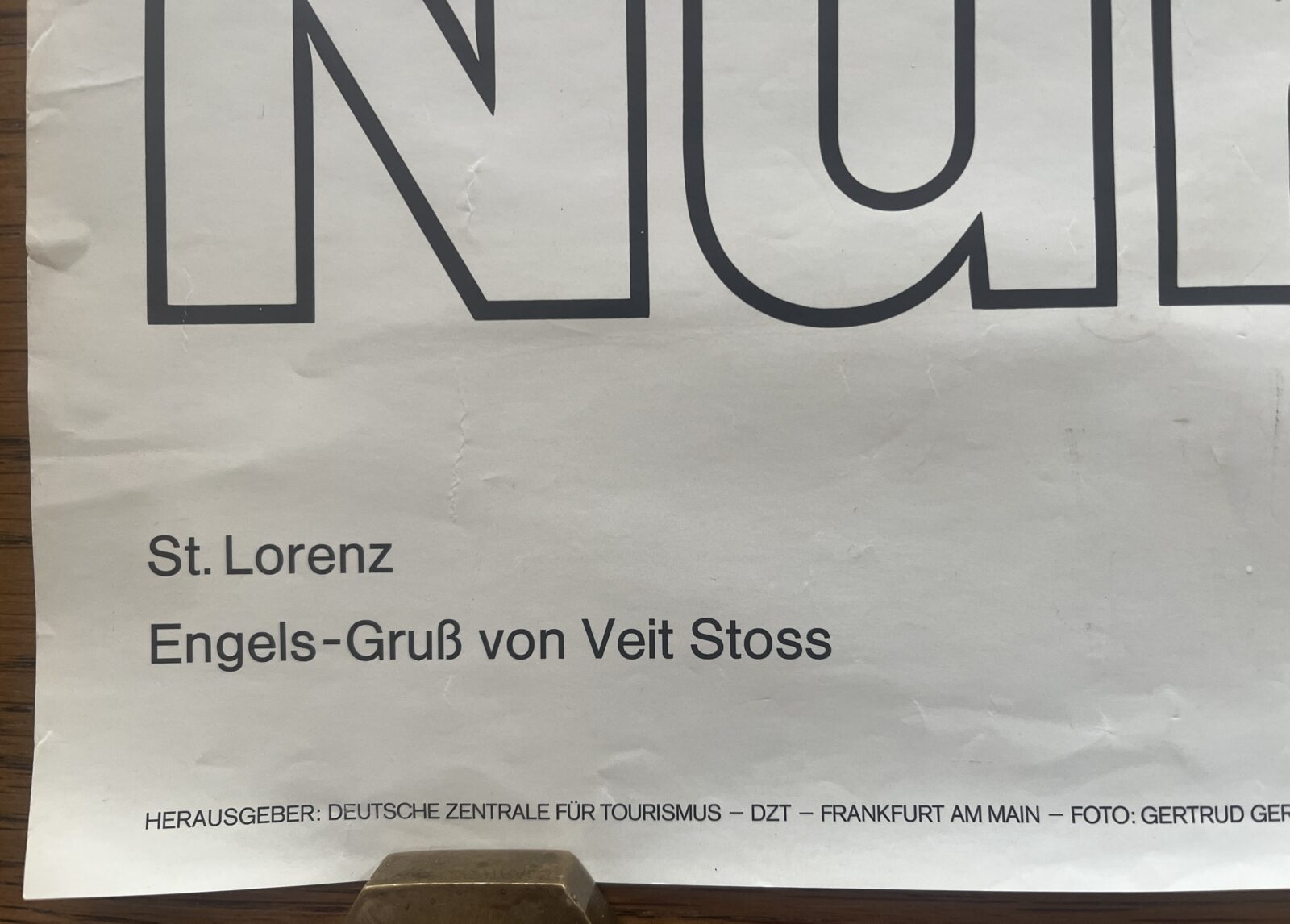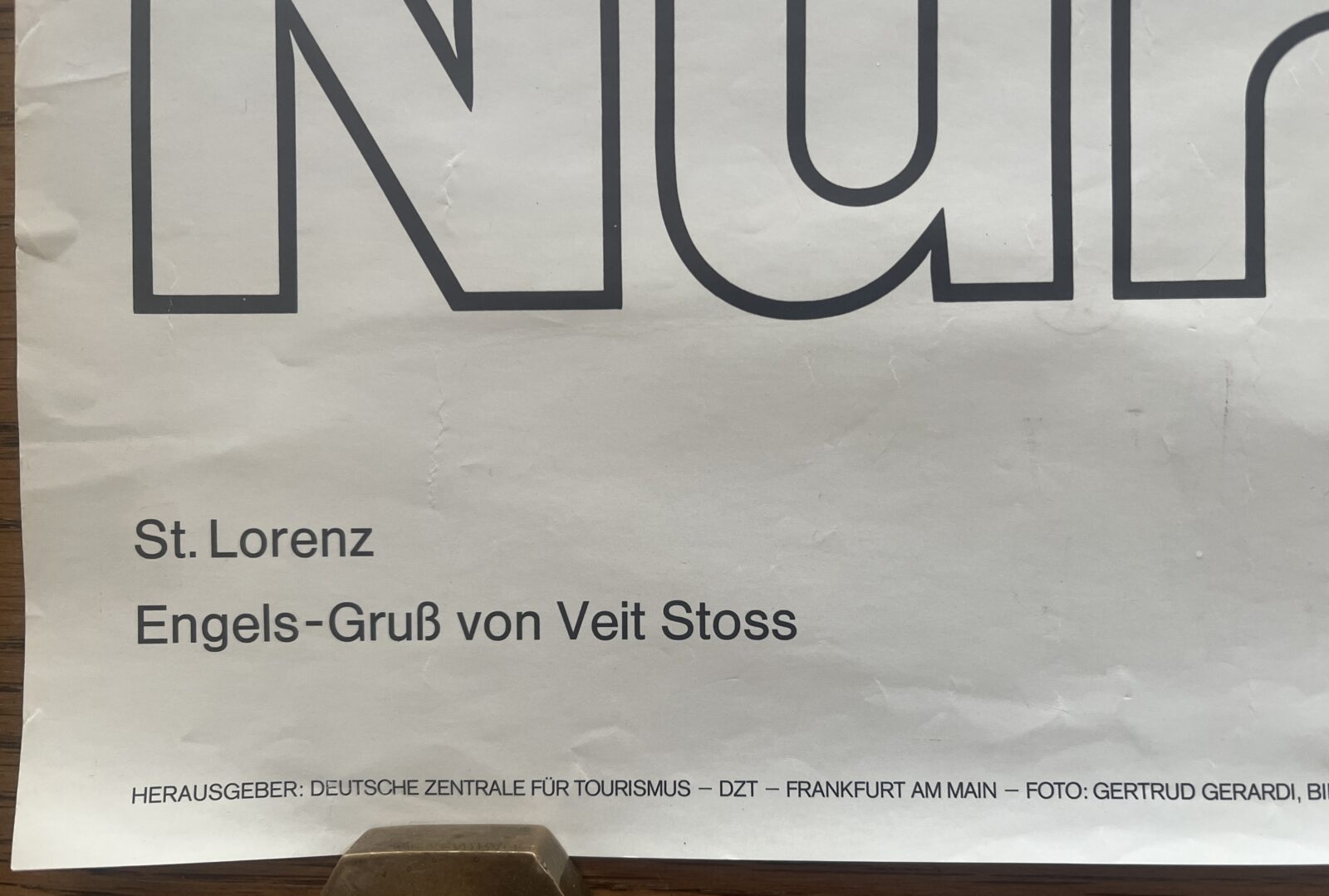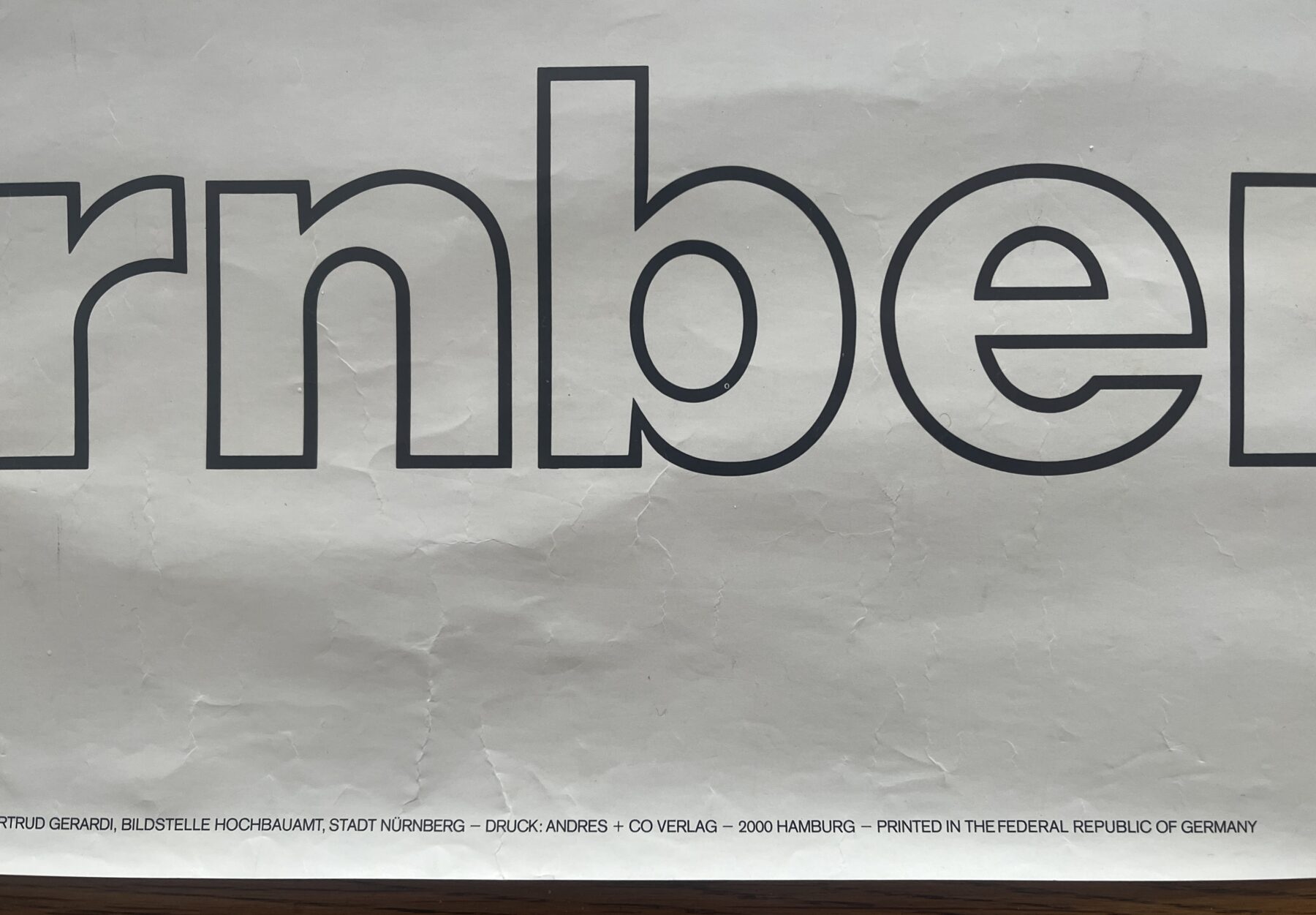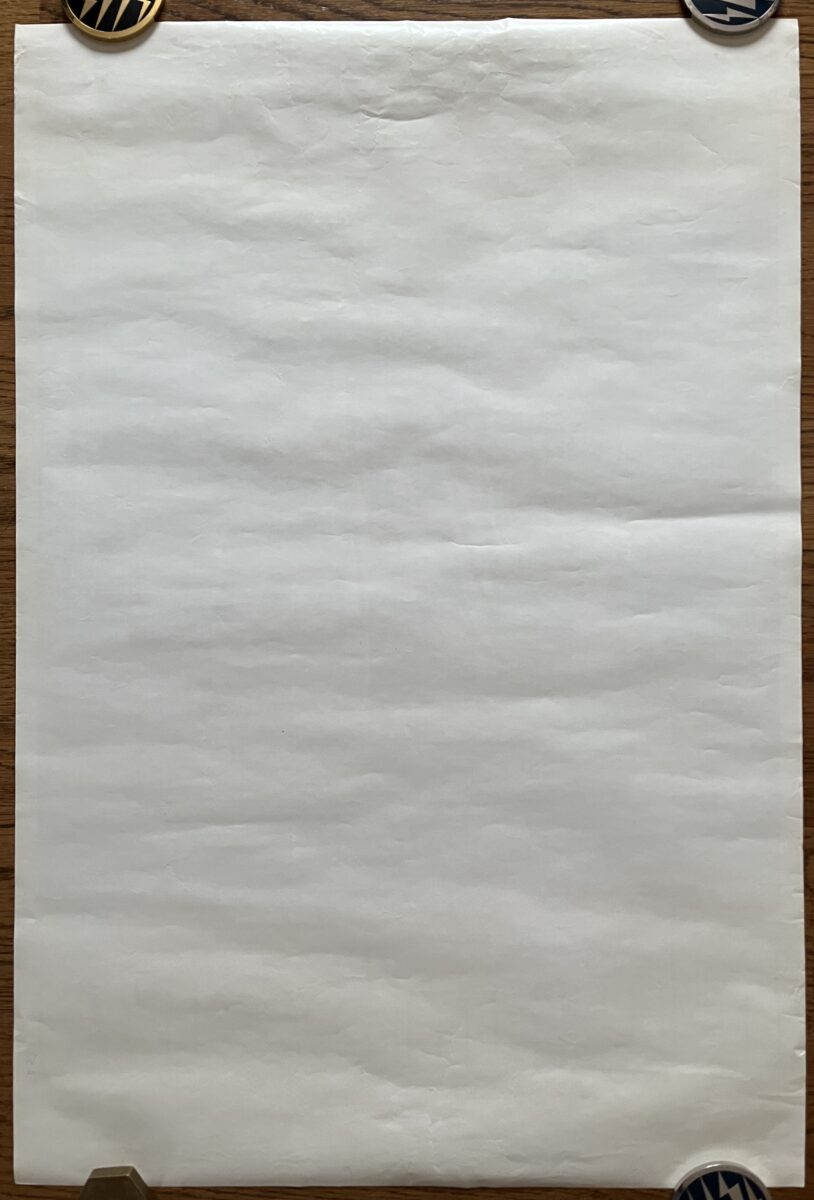Rare, 1970s, Original Official Photo Poster, Angelic Salutation, Veit Stoss, Nuremberg, Gertrud Gerardi
195.00€
Description
Original Rare
Official Photo Poster
from the early 1970s
Nürnberg
St. Lorenz
Engels-Gruß von Veit Stoss
Nuremberg
St. Lawrence
Angelic Salutation by Veit Stoss
Photo by Gertrud Gerardi
Published by the German National Tourist Board (Deutsche Zentrale für Tourismus) in Frankfurt a.M. in the 1970s
Printed by Andres + CO Verlag, 2000 Hamburg
Printed in the Federal Republic of Germany (BRD)
Dimension approx. 74 cm x 50 cm
The Angelic Salutation in St. Lorenz Church, Nuremberg, is a notable late Gothic artwork created by Veit Stoß (1447–1533) between 1517 and 1518. It is a finely carved and painted sculpture depicting the Annunciation, the Moment in which the Archangel Gabriel announces the birth of Jesus to the Virgin Mary. Commissioned by the merchant Anton Tucher, the piece was reviewed by Albrecht Dürer himself before the final payment was made to Stoß. In 1525 Nuremberg split from the Catholic church in favor of Lutheranism. From 1519 a green fabric was placed over the work, and it was allowed to be uncovered only on holy days. Because the work was deemed the private property of the Tucher family it mostly escaped destruction and even was allowed to remain – albeit shrouded – in a public area, The sculpture is recognized for its detailed craftsmanship, particularly the floating figures and the flowing garland. To protect it during World War II, it was moved to a safe location, preserving it from damage. Today, it remains an important example of late Gothic wood carving in Germany.
The poster was published by the Deutsche Zentrale für Tourismus – German National Tourist Board (DZT). This organization is responsible for Germany’s international tourism advertising and has produced high-quality posters and promotional materials to bring major German cultural attractions closer to an international audience. This poster was part of an advertising campaign for Nuremberg after its reconstruction.
Gertrud Gerardi (1914 – 2002) was a prominent German photographer known for her extensive work in documenting the reconstruction of Nuremberg after World War II. She served as the official photographer for the city’s Hochbauamt (Building Department), capturing the architectural restoration during the post-war period. Her photographs are invaluable historical records, providing detailed visual accounts of Nuremberg’s transformation. Gerardi’s work has been featured in various publications and exhibitions, highlighting her significant contribution to architectural and documentary photography.

